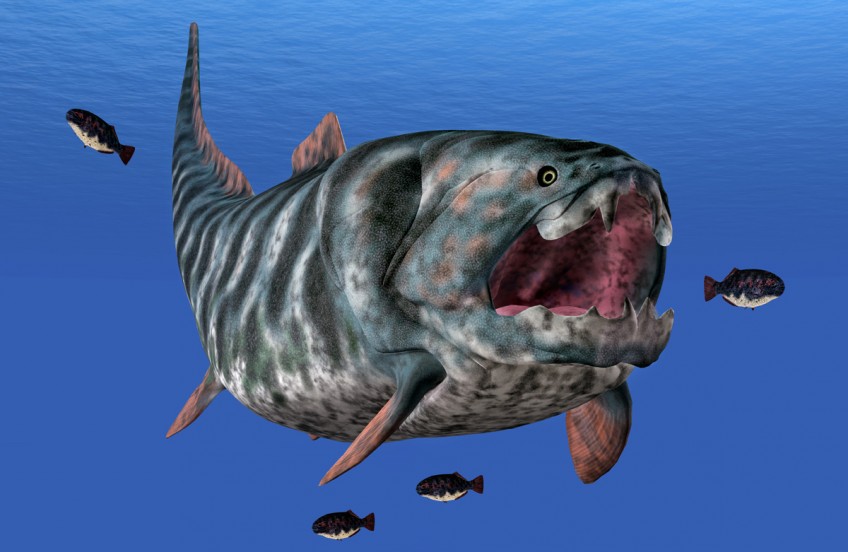The Devonian extinction saw the oceans choke to death


It was the age of fish. 360 million years ago, there were no large land animals, and the biggest animals were still in the oceans. One of the largest was Dunkleosteus.
This was a sea monster like no other. Dunkleosteus was a powerful fish that grew up to 10m long and was covered with thick armour. It was a predator, and had sharp bones sticking out of its jaw instead of teeth. It literally ate sharks for breakfast.
You might think that this tank-like fish could withstand anything, but time was running out for Dunkleosteus. Throughout the oceans species began dying out, and by the time it was all over between 79 per cent and 87 per cent of all species had gone extinct - including Dunkleosteus.
It was one of the worst mass extinctions in Earth's history. Clearly, something dreadful must have happened, but what? There is no smoking gun, no sign of anything dramatic. Instead it seems the trigger was something utterly innocuous - but which led to a series of knock-on effects that ultimately proved catastrophic.
The "age of fish" is technically called the Devonian period. It lasted from 419 to 359 million years ago. This was a time long before even the dinosaurs walked the Earth.
But while there were few land animals, the oceans were staggeringly rich in life. A fossilised reef in Western Australia, the Gogo Formation, captures life in the Devonian seas.
"It's teeming with placoderm fish and they're exquisitely preserved, in three dimensions," says Michael Coates, an evolutionary biologist at the University of Chicago in Illinois. "They're beautiful and weird and there is nothing like that around today."
All this is now gone, wiped out in the extinction that struck at the end of the Devonian.
Read the full article here.